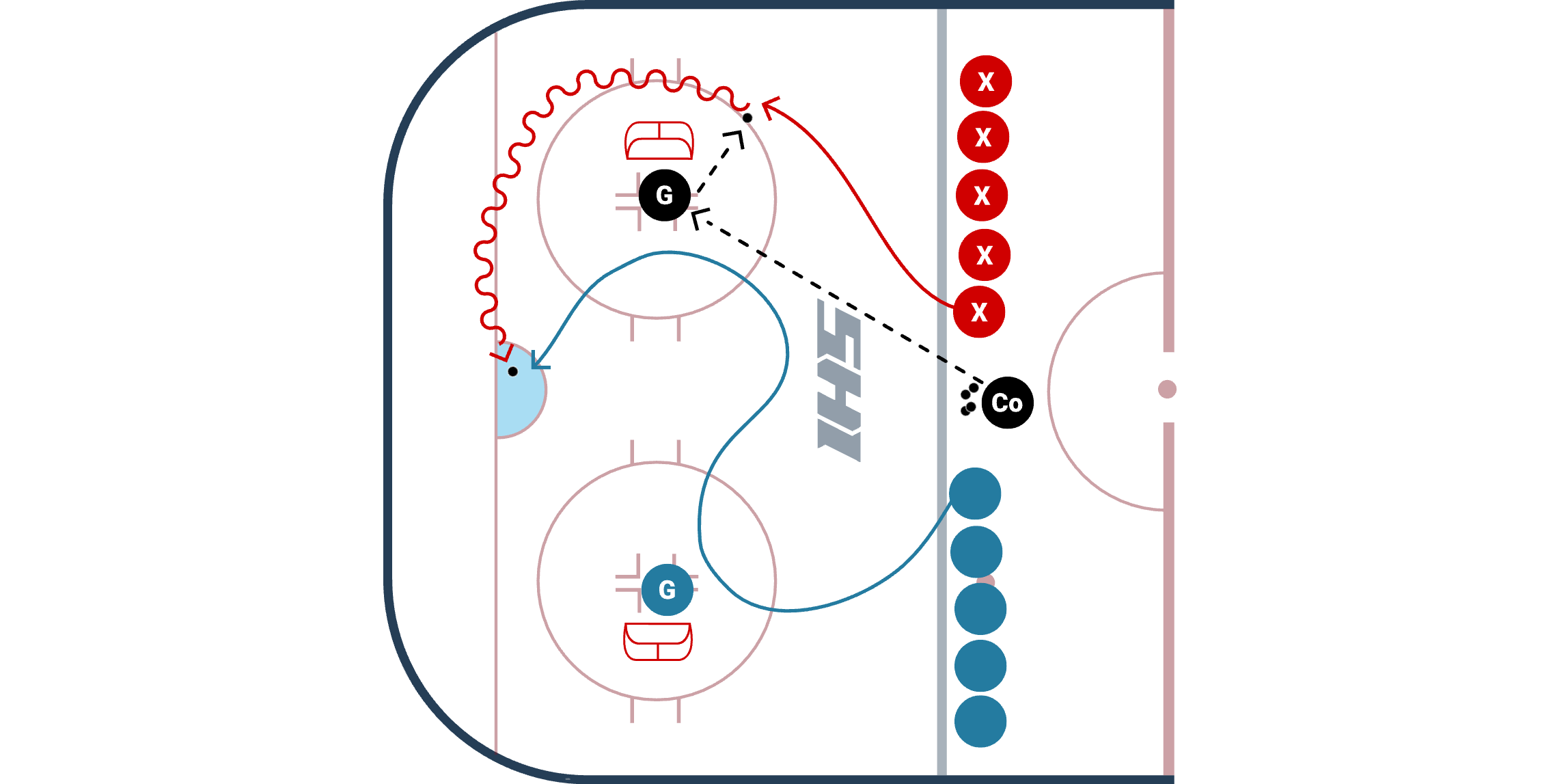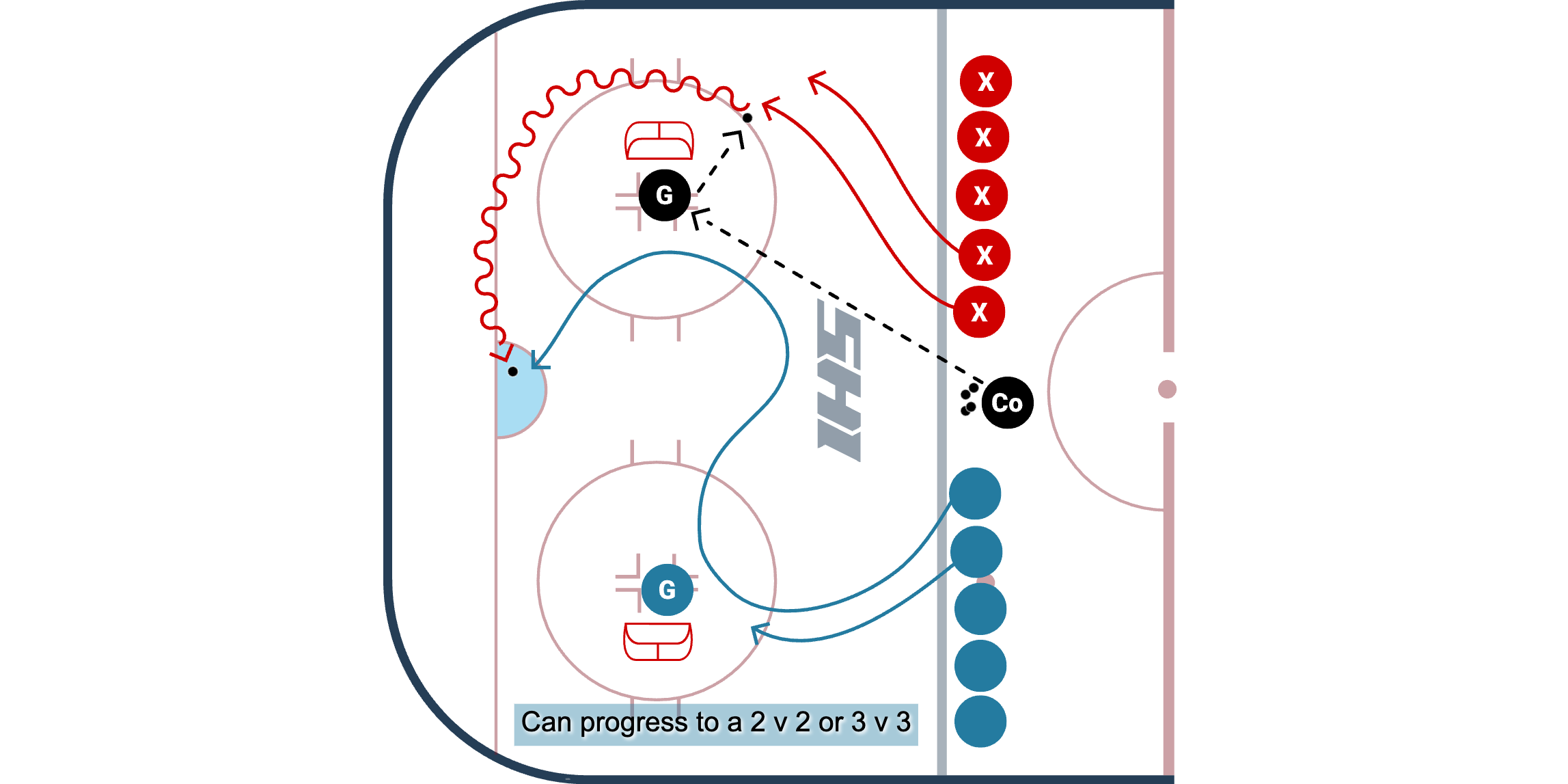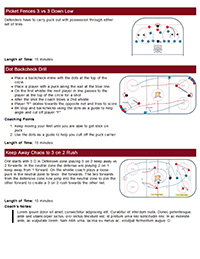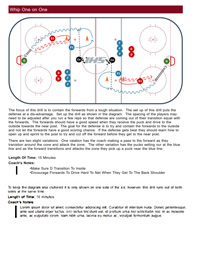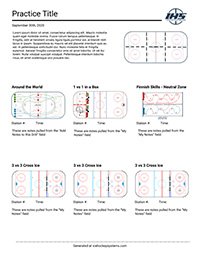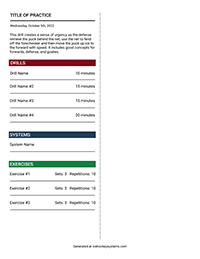Angling Stations
Angling Stations

Please Note: The Practice of the Week is designed to bring value across multiple age levels. You can use this to build ideas to develop your own practice. With that being said, we highly encourage you to adjust the drills based on your team's age and skill levels. IHS should always be used as a starting point and you can add/remove constraints to fit your team.
ALSO NOTE: You do not need goalies or nets for all of these drills. Adjust based on your team structure.
Practice Theme: The drills in this practice are designed to help your players practice and develop angling habits in different situations.
3 Key Focus Points
- Skating Routes - Take routes that allow you to match the speed of the player you are trying to take an angle on to cut off passing lanes and put you in a position to cut through their hands
- Contact - Use your stick and body position to keep the player towards the boards and not let them cut back to open ice
- Stick Detail - Lead with your stick to take away passing lanes and to get your stick on the puck at the point of contact
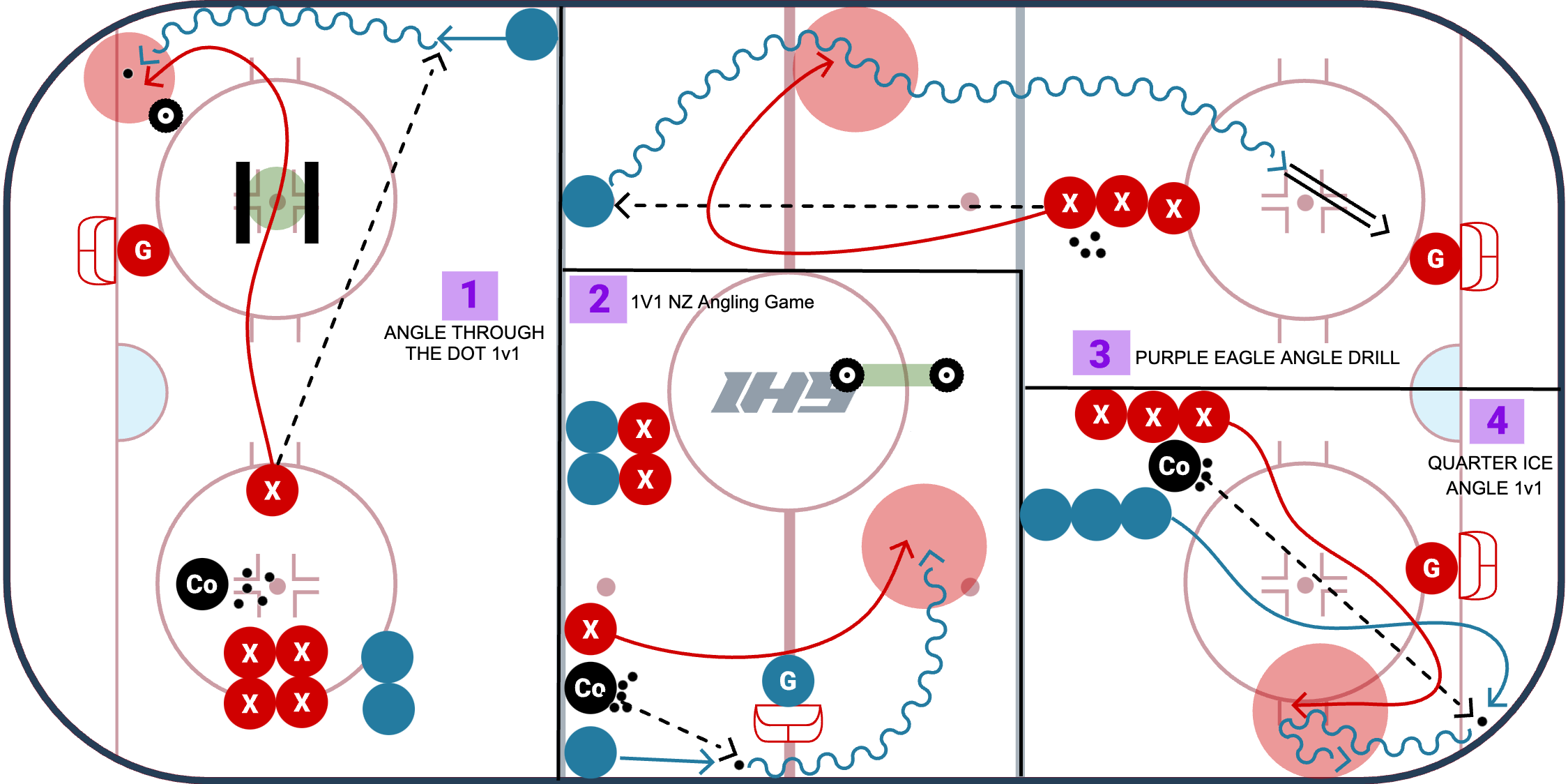
Circle Angling Drill
Drill Setup:
- Split players into small groups at the circles.
- Draw a line to split the circle in half. X1 starts with the puck, passes to X2 at the opposite side of the circle. X2 passes the puck back to X1.
- X1 must choose a 1/2 of the circle and skate attempting to skate on that half and ge tto the opposite half of the circle.
- X2 angles, X1 and does not allow them to get to other half/side of the circle.
Drill Purpose:
- Purpose of the drill is to introduce angling. BecauseX1 and X2 start across from each other, the drill stresses that"X2" cannot skate straight atX1 but must angle and push X1 one direction.
- Can introduce the concept of using your stick to help steer the player as well as going stick on stick and body on body at the right moment.
Common Mistakes:
- "X2" giving up the middle behind them and not being patient. "X2"looking at the puck and/or only going for the puck instead of body &puck.
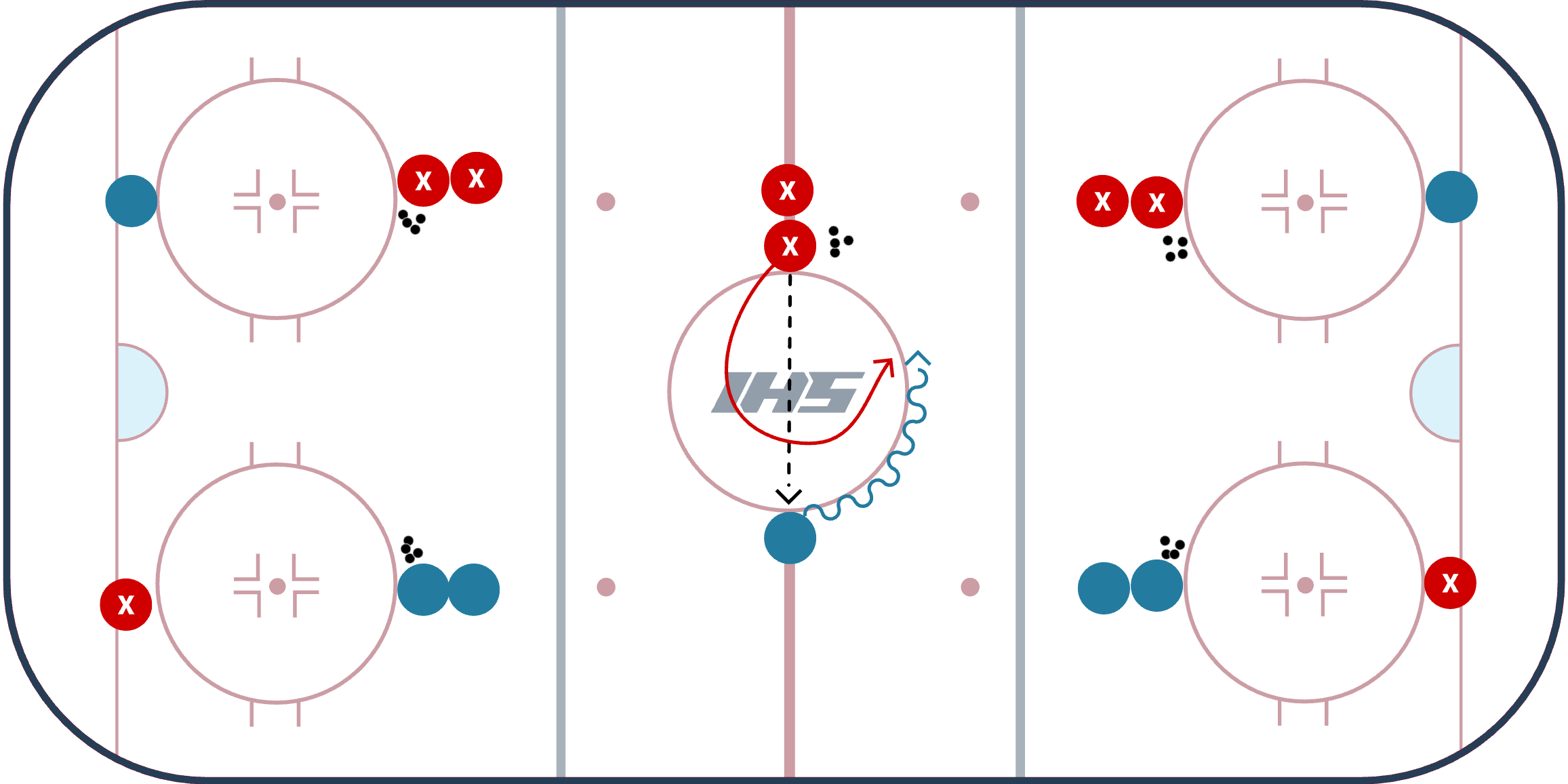
Use all 5 circles, have coaches or rotate players to warm up goalies
Angle Through The Dot 1 V 1
Angle through the dot 1 v 1 drill helps players practice angling in tight space, while the puck carrier practices puck protection techniques.
Setup
- Offensive players line up at the blue line.
- Defensive players are set up at the face-off circle as shown in the diagram.
- On the whistle, the defensive player passes the puck to the offensive player, who is streaking down the boards.
- This begins the 1 v 1.
- The defensive player must skate through the barriers (can be cones, or tires as well) and works to angle the puck carrier to prevent them from scoring.
- The puck carrier works to protect the puck and score.
- Players should get reps on offense and defense.
Coaching Points
- Offense: drive down the boards with speed, protect the puck, and keep your feet moving so you can drive through the check.
- Defense: Match puck carriers speed, angle and steer with stick, press hands on hands and go stick on puck so you can remove the puck from the offensive player and gain puck possession.
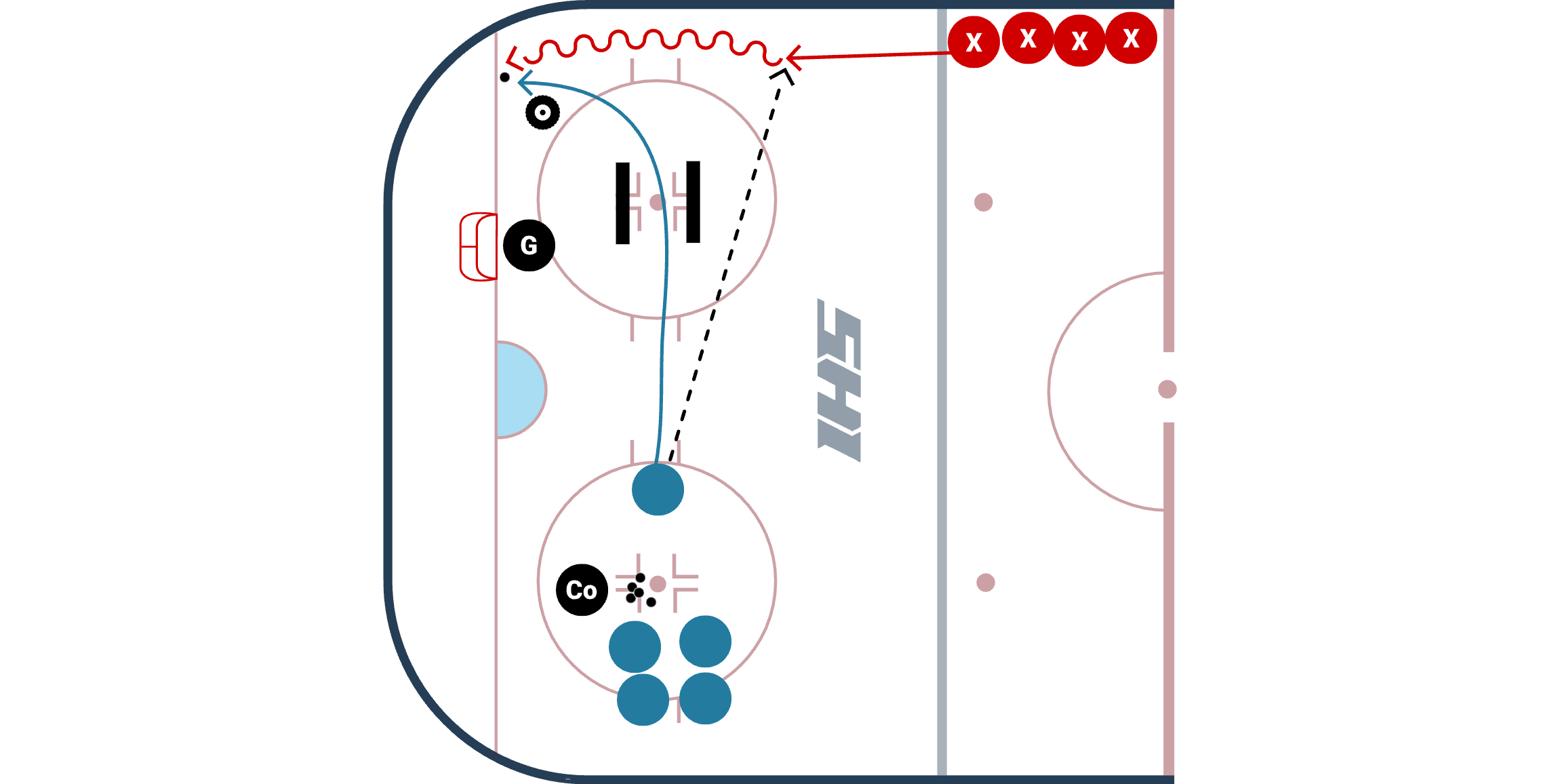
1 v 1 Angling Game in NZ
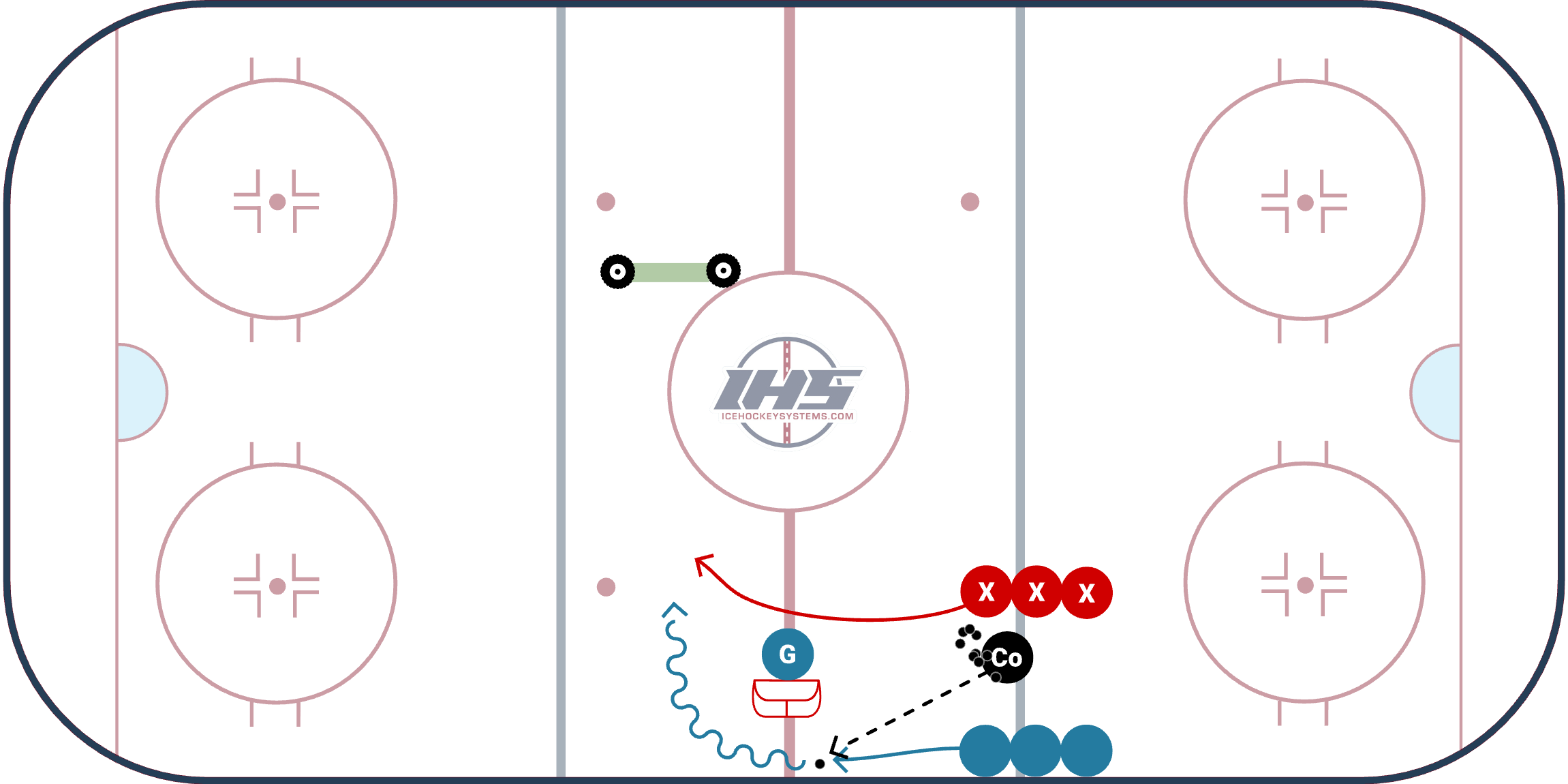
Purple Eagle Angle Drill
The Purple Eagle Angle Drill from TJ Manastersky, Head Coach of Brock University allows players to practice offensive puck protection and defensive angling concepts.
Setup
- Line up players by all 4 neutral zone face-off dots.
- On the whistle, alternating lines from opposite sides of the ice pass the puck to the player directly across from them.
- The puck carrier jumps up ice as soon as they get the puck while the player who passed them the puck works on angling them to the outside of the ice.
- The puck carrier then practices "cutting the defenders hands," works to get inside ice after they get into the blue line, and take a shot on net.
- Alternate sides so everyone gets chances to play on offense and defense.
Coaching Points
- Defender - keep stick on the ice and angle the puck carrier to the outside of the ice.
- Puck carrier - keep head up and work to cut the defenders hands to take away their strength to poke check and take the puck away from you. Practice shooting in stride or changing the shot angle on your shot.
Variations
- Can have defenders use token pressure (as shown in the video), or allow this to be a full 1 on 1.
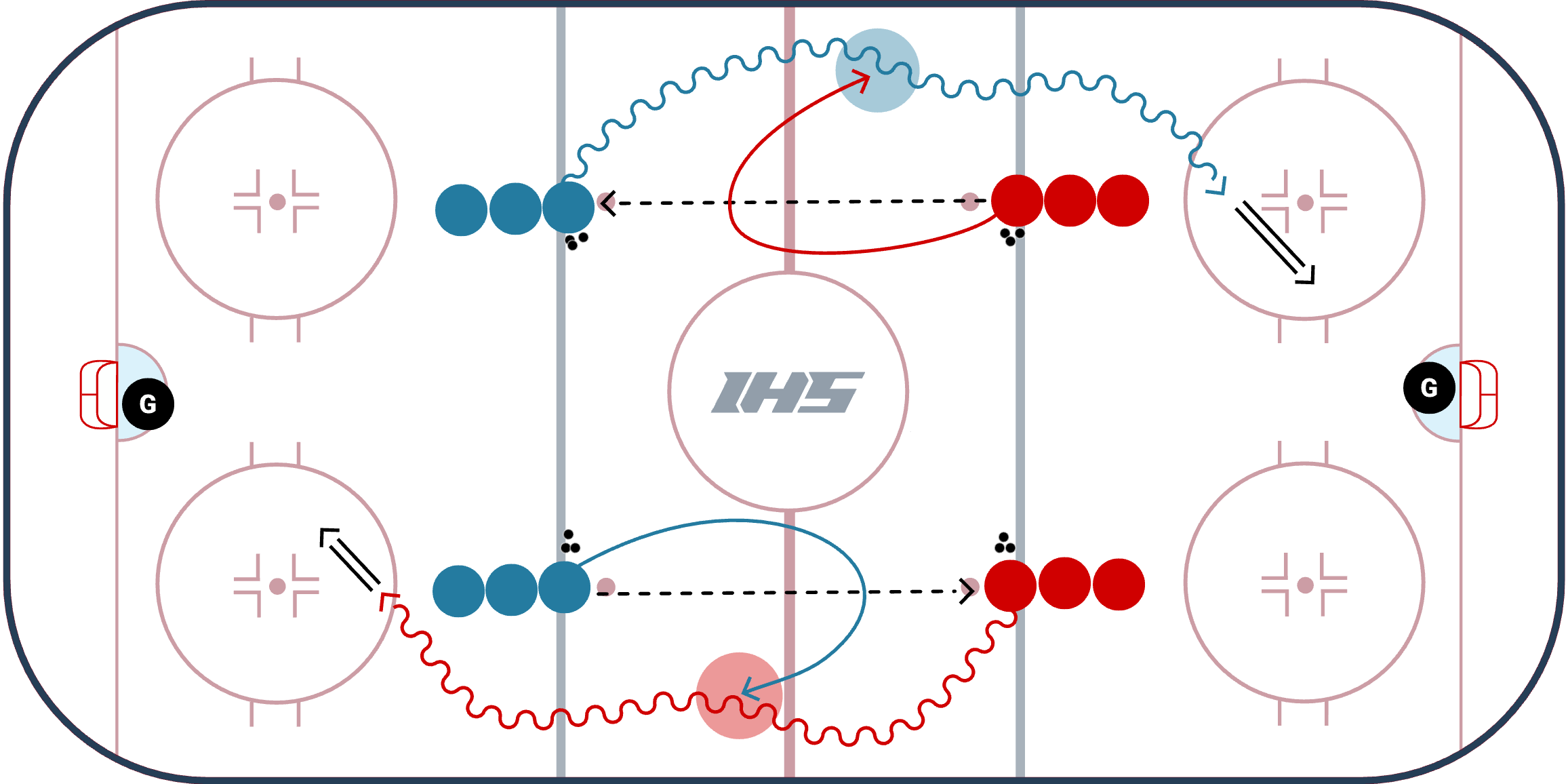
Actually finish the play defensively - not just token pressure as the video has
Continuous 1 on 1 Puck Retrieval Drill
Drill Setup:
- 2 lines of players at tops of the circle. Drill starts with 1 player (X) going to retrieve a puck in the corner. The first O player follows X and gets right next to them so they are now skating up the wall. X (who has puck) now steps into and hits the O player. O is the decoy and allows X to step in and hit them. After the check X turns toward the wall and attacks the net. O then continues and picks up a puck in the opposite corner. As O is going to retrieve their puck a new X player comes in and follows as to be there decoy. Drill is continuous.
Drill Purpose:
- Purpose of the drill is too focus on the puck carrier using checking to nullify the defender and open an opportunity for them to get off the wall and away from the defender.
- In addition it is also meant to reiterate the point that using checking on the offensive side of the puck is the best way to protect ourself as well as the puck.
Variations:
- If the continuous retrieval is too hard for some players, it is suggested that you isolate the skill, and try out the Isolated Bump & Go here.
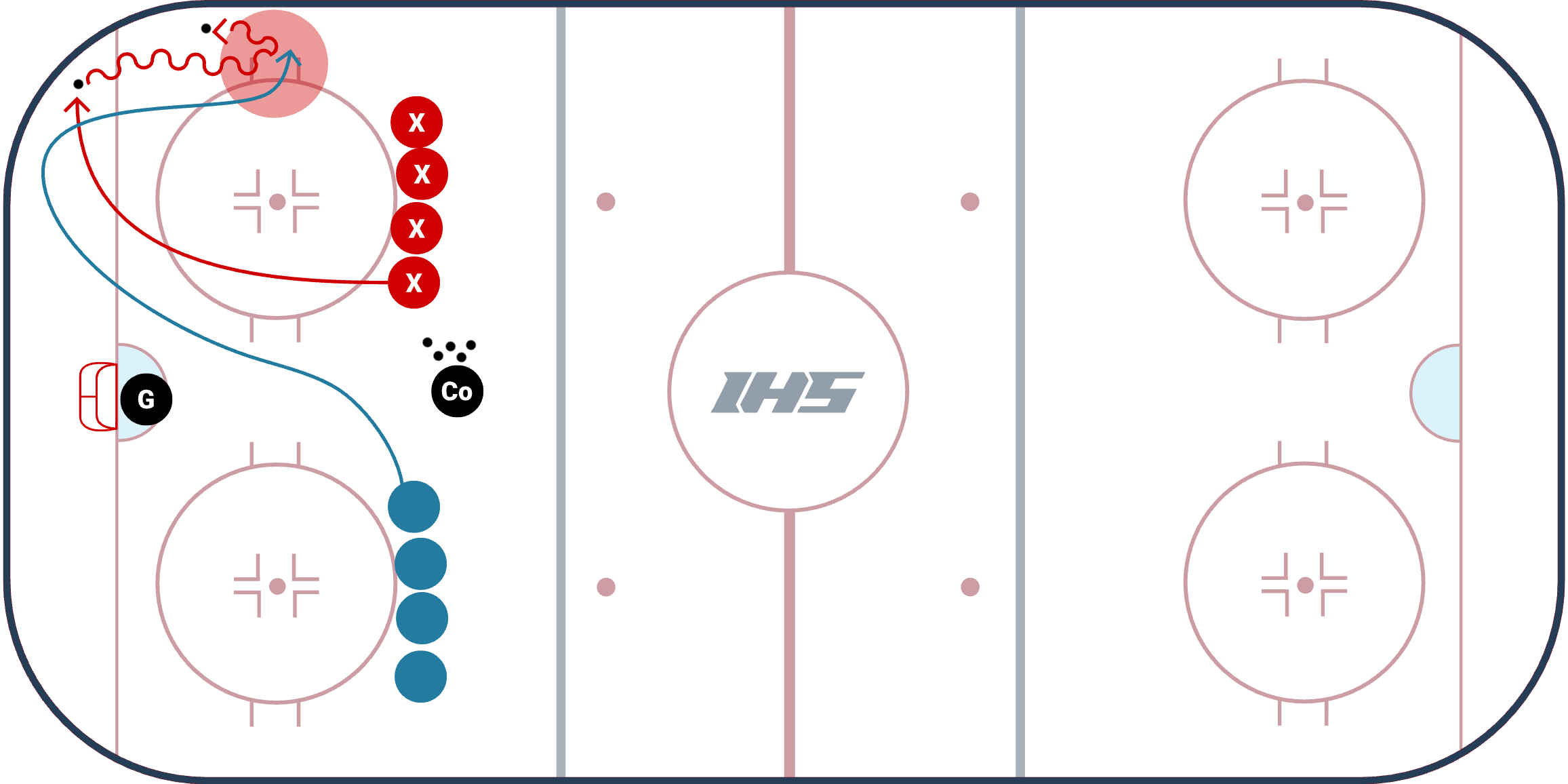
Angling Through The Circles Progression
The Angling Through The Circles Progression starts as a 1 v 1, and can progress to a 2 v 2, and 3 v 3. Both teams are trying to score, and work on angling.
Setup
- Place 2 nets in a cross-ice setup.
- Coach puts a puck on a goalie and a player picks it up and wheels around the net and drives toward the opposing net.
- The defending player much go through both circles and angle the other player out of the play.
- The game continues as a 1 v 1 battle.
- The progression starts out as 1 v 1, but can progress to 2 v 2 and 3 v 3.
Coaching Points
- Players that are angling the puck carrier should work to match the puck carriers speed, keep their stick on the ice to go stick on puck, and then eliminate their hands with body contact.
- Supporting players on defense should be ready to jump in for loose pucks to support their teammate, and transition quickly to offense.
